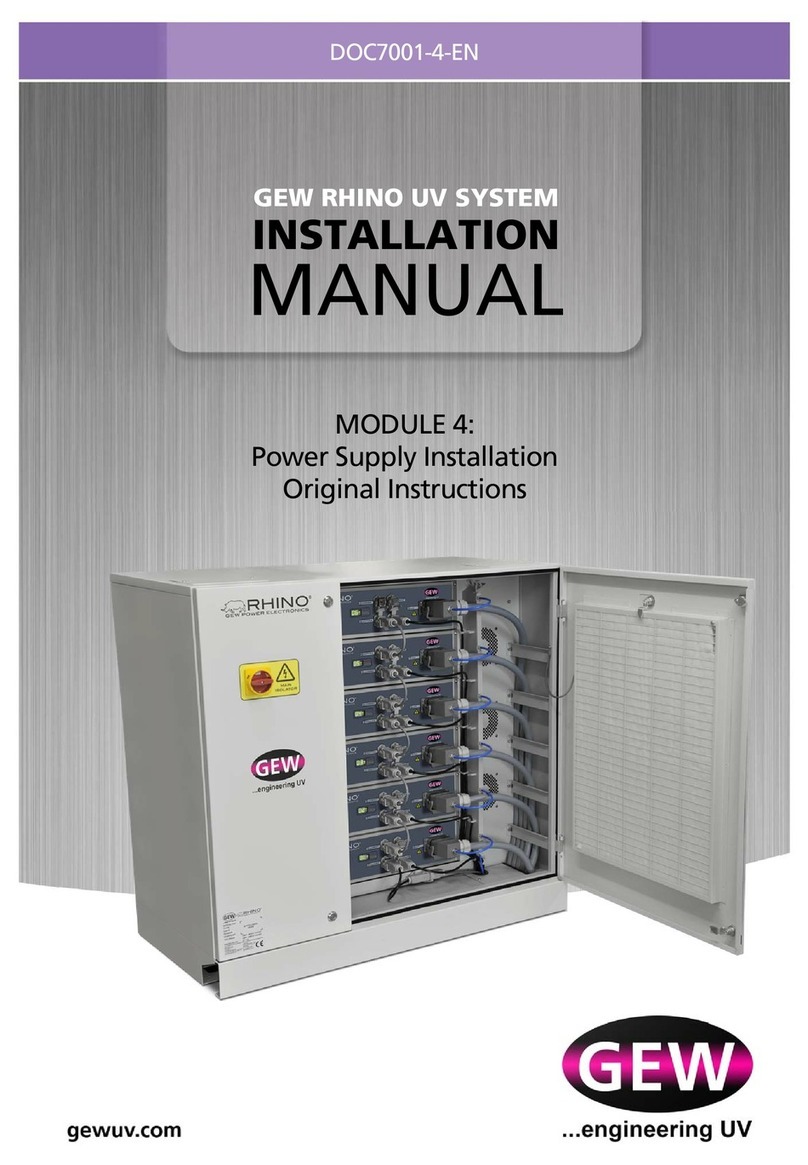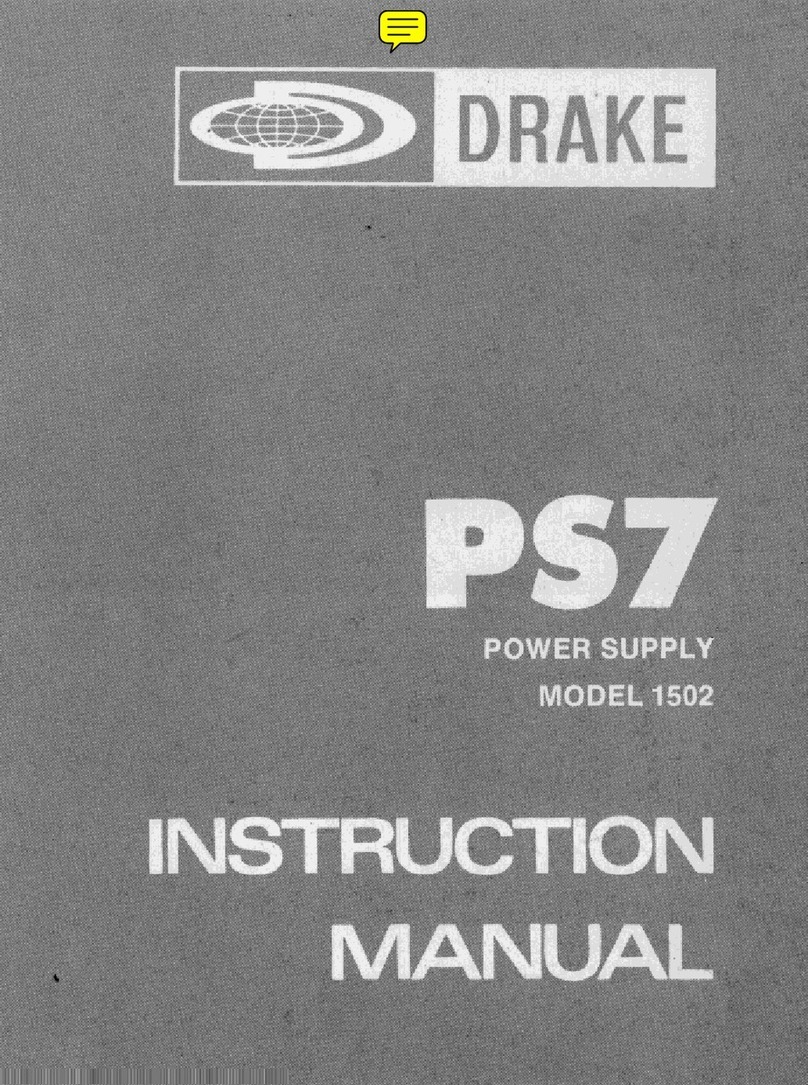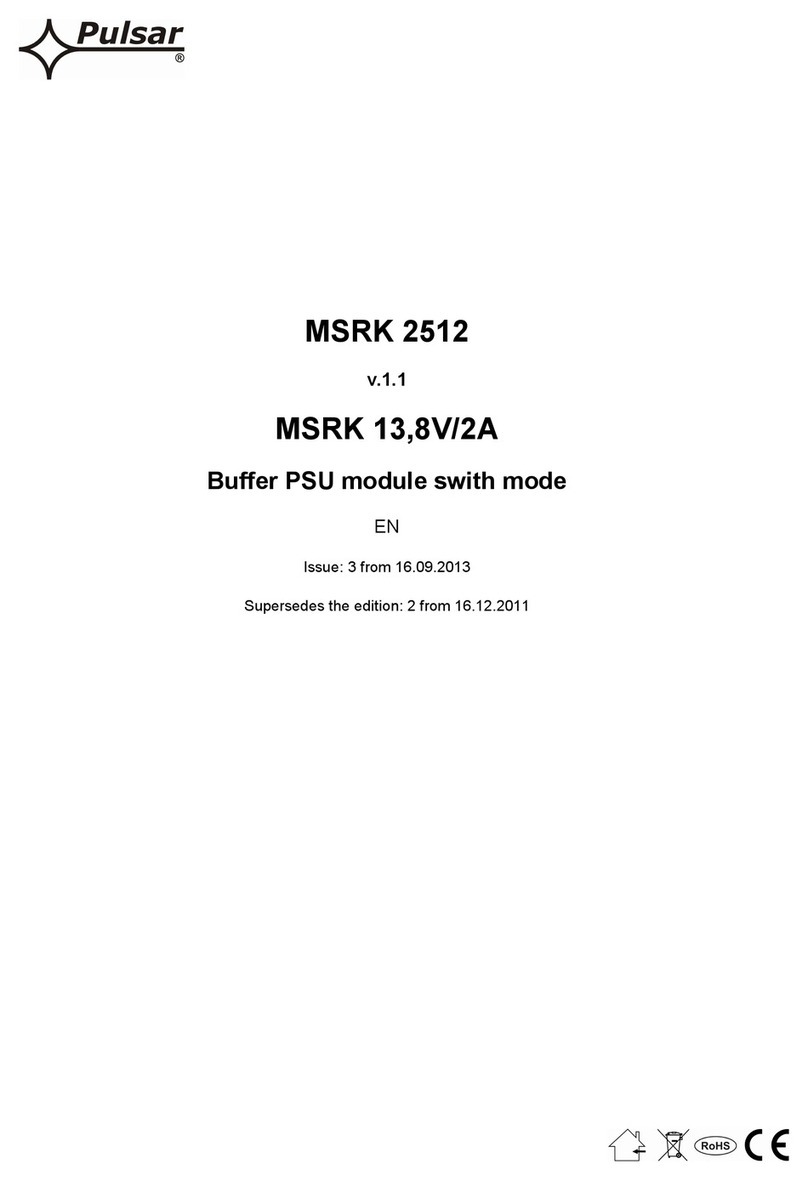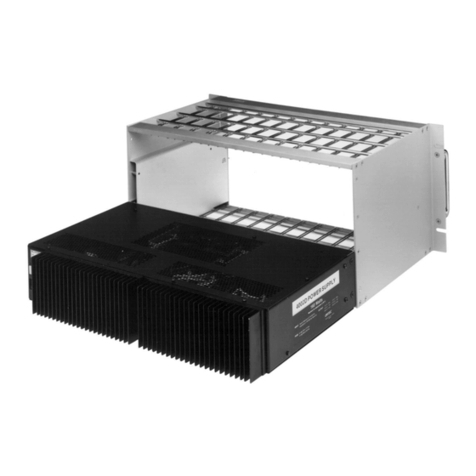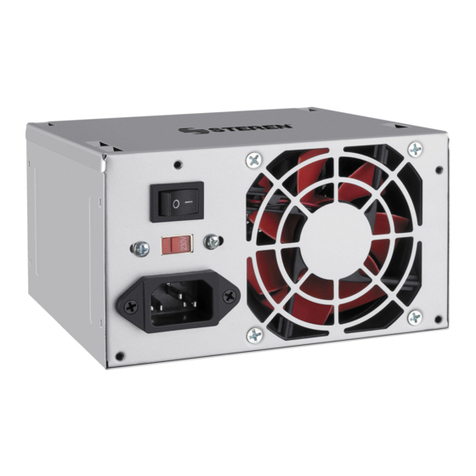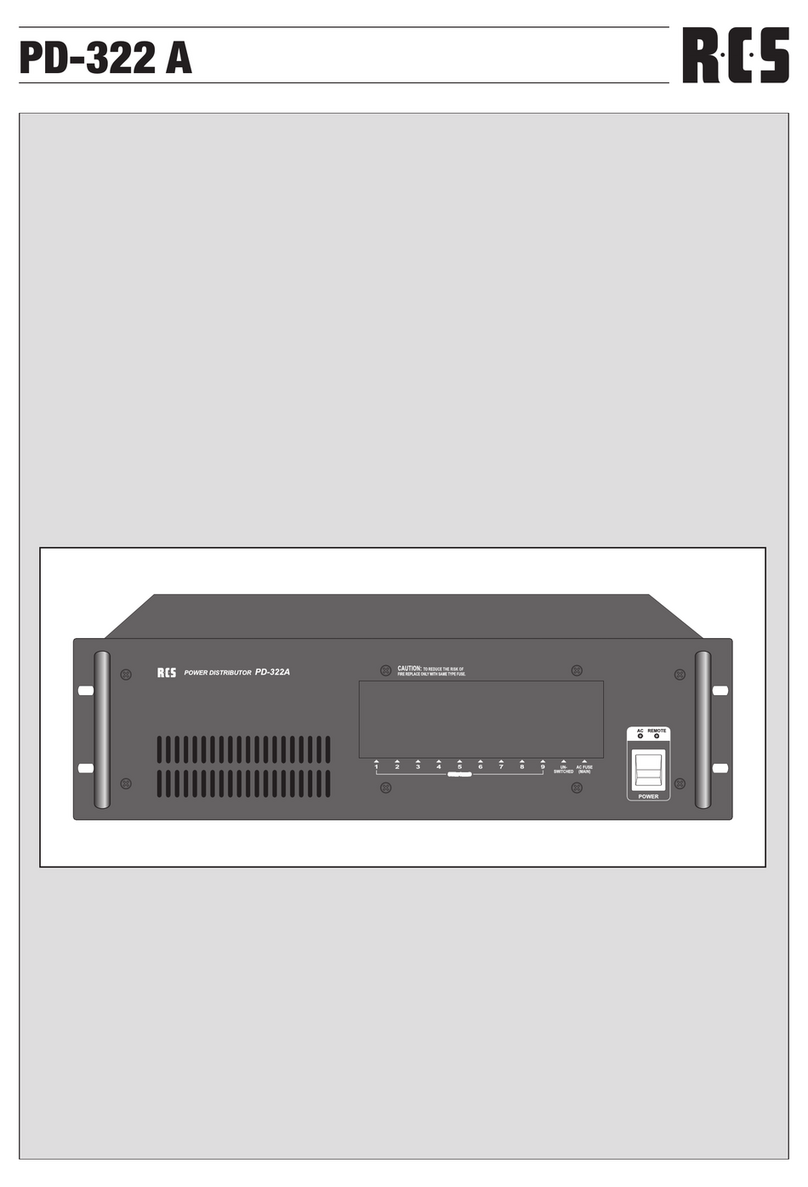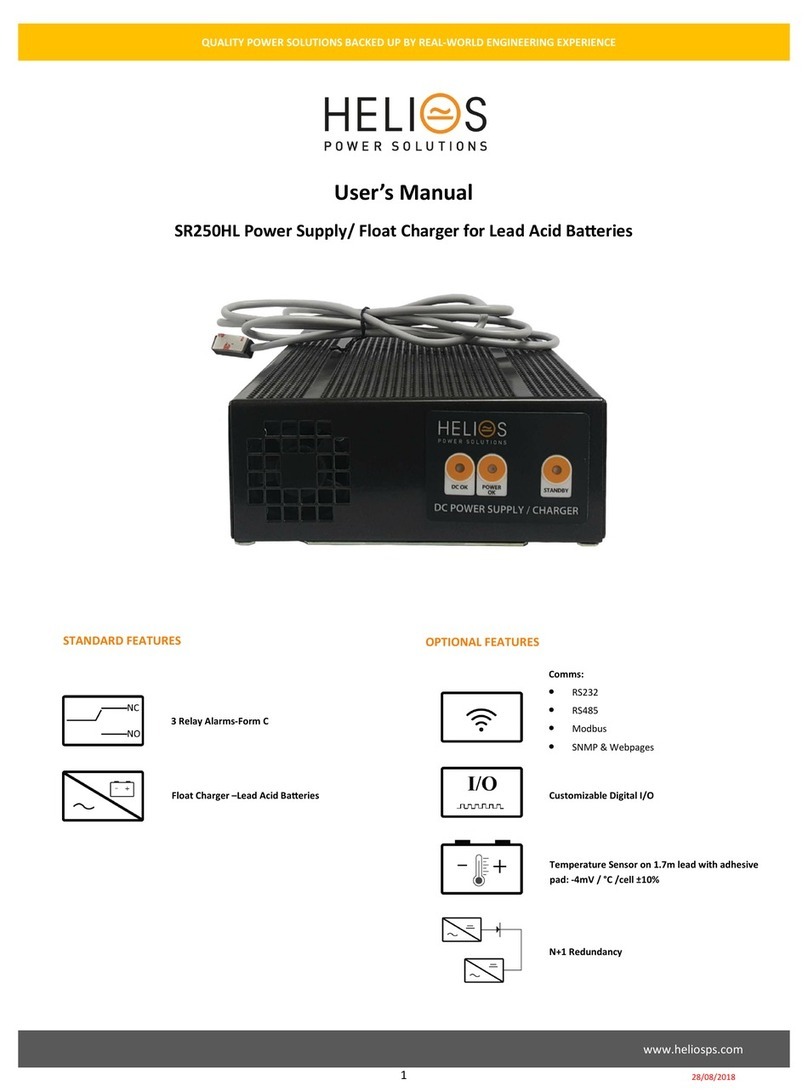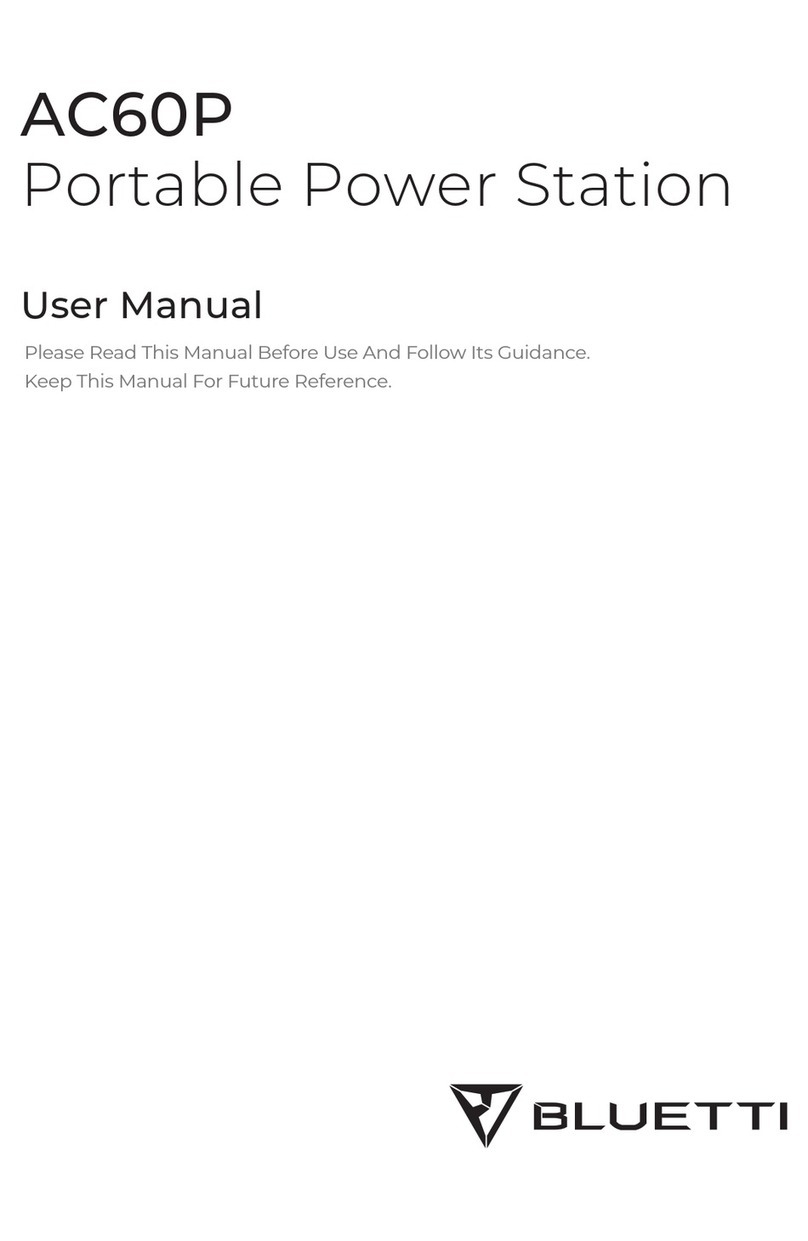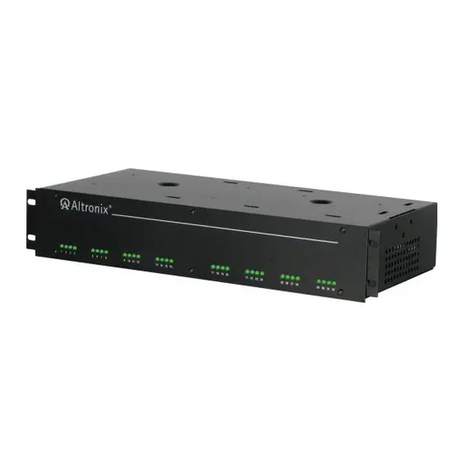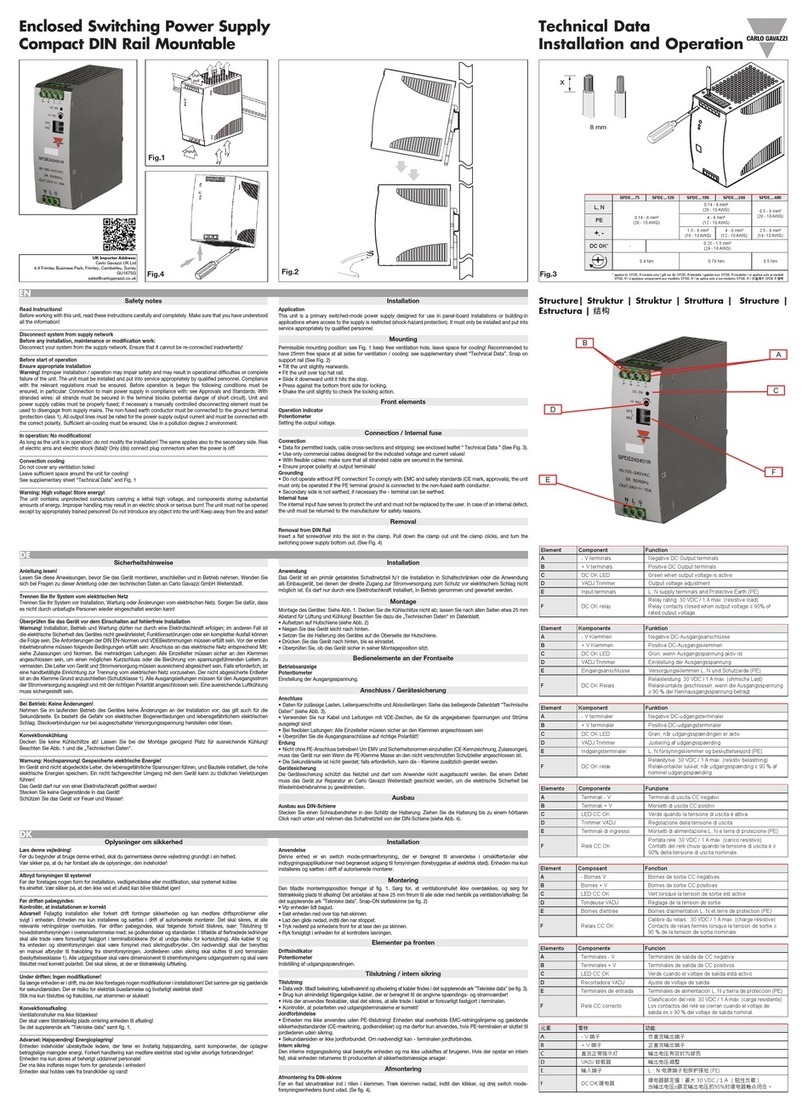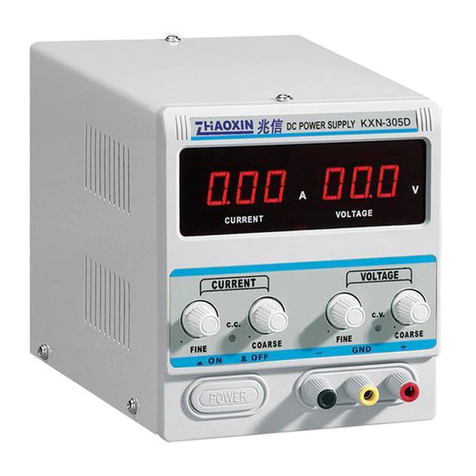GEW e-Brick 9kW Installation instructions

GEW UV DRYING SYSTEM
e
-Brick
INSTALLATION & OPERATING MANUAL
…engineering UV
GEW (EC) Limited
Kings Mill Lane, South Nutfield
REDHILL, Surrey RH1 5NB, England
Telephone: +44 (0)1737 824500 Fax: +44 (0)1737 823822
Spares & Service telephone: +44 (0)1737 824510
www.gewuv.com
GEW UV
e
-Brick installation and operating manual 1 of 49

Table of Contents
1. Product Description ................................................................................................................... 6
1.1. Related documentation....................................................................................................... 7
1.1.1. GEW Product manuals................................................................................................ 7
1.1.2. European (EN) Standards ........................................................................................... 7
1.1.3. British Standards ......................................................................................................... 7
1.1.4. Guidance notes ........................................................................................................... 7
1.1.5. North American & Canadian Standards ...................................................................... 7
1.1.6. Symbols used.............................................................................................................. 8
2. Transport, Handling, Storage..................................................................................................... 9
2.1. Storage ............................................................................................................................... 9
2.2. Dimensions......................................................................................................................... 9
2.3. Handling ........................................................................................................................... 10
3. Installation & Commissioning................................................................................................... 11
3.1. Fixing / anchoring ............................................................................................................. 11
3.1.1. Freestanding applications ......................................................................................... 11
3.1.2. Fitment of optional feet.............................................................................................. 12
3.1.3. Permanent Mounting ................................................................................................. 13
3.2. Space needed for use and maintenance.......................................................................... 14
3.3. Environmental conditions ................................................................................................. 15
3.3.1. Temperature.............................................................................................................. 15
3.3.2. Humidity .................................................................................................................... 15
3.3.3. Altitude ...................................................................................................................... 15
3.3.4. Contaminants ............................................................................................................ 15
3.3.5. Vibration, shock and bump........................................................................................ 15
3.3.6. Electromagnetic compatibility.................................................................................... 15
3.4. Connection to power supply ............................................................................................. 16
3.4.1. Essential electrical installation data........................................................................... 16
3.4.2. Residual current devices ........................................................................................... 16
3.5. General recommendations ............................................................................................... 17
3.5.1. Installation ................................................................................................................. 17
3.5.2. Modifications ............................................................................................................. 17
3.5.3. Markings and tamper evident seals........................................................................... 17
3.5.4. Location of equipment ............................................................................................... 17
3.6. Waste removal & disposal ................................................................................................ 18
4. Product information.................................................................................................................. 19
4.1. Description of the
e
-Brick ............................................................................................... 19
4.2. Applications ...................................................................................................................... 19
4.3. Prohibited usages............................................................................................................. 19
4.4. Safety features .................................................................................................................19
4.4.1. Internal fuses............................................................................................................. 19
4.4.2. Indicators................................................................................................................... 20
4.4.3. System Emergency stop ........................................................................................... 20
4.4.4. Contactor................................................................................................................... 20
4.4.5. Temperature & cooling .............................................................................................. 20
4.4.6. Output protection....................................................................................................... 20
4.5. General Data ....................................................................................................................21
4.5.1. Electrical supply ........................................................................................................ 21
4.5.2. Performance Ratings................................................................................................. 21
4.5.3. Noise & Vibration....................................................................................................... 21
4.5.4. Radiation ................................................................................................................... 22
4.5.5. Gases, Vapours, Dust ............................................................................................... 22
4.6. Electrical Data .................................................................................................................. 22
4.6.1. Block diagram............................................................................................................ 22
4.6.2. Interface details ......................................................................................................... 23
4.6.3. SELV ports ................................................................................................................ 25
GEW UV
e
-Brick installation and operating manual 2 of 49

4.6.4. OPTION: Gravure purge hardware ........................................................................... 29
4.7. Conformity ........................................................................................................................ 30
5. Product application .................................................................................................................. 31
5.1. Intended use of the
e
-Brick............................................................................................. 31
5.2. Manual controls ................................................................................................................ 31
5.3. Setting and adjustment..................................................................................................... 31
5.4. Stop functions including emergency stop ......................................................................... 32
5.5. Sequence of operation ..................................................................................................... 32
5.6. Risk Reduction ................................................................................................................. 33
5.6.1. Remaining risks, Hazard reduction and safeguards.................................................. 33
5.6.2. Misuse and prohibited usages................................................................................... 34
5.7. Fault identification and repair ........................................................................................... 34
5.8. Personal Protective Equipment ........................................................................................ 34
5.9. Training required .............................................................................................................. 34
6. Maintenance information .........................................................................................................35
6.1. Safety inspections ............................................................................................................ 35
6.2. Functional Testing ............................................................................................................ 35
6.3. Specialist inspection & repair ........................................................................................... 35
6.3.1. Firmware update ....................................................................................................... 35
6.3.2. Safety devices ........................................................................................................... 35
6.4. Routine (operator) maintenance....................................................................................... 36
6.4.1. Air filter cleaning / replacement ................................................................................. 36
6.5. Fault finding guidelines..................................................................................................... 37
6.5.1. General faults ............................................................................................................ 37
6.5.2. Individual faults.......................................................................................................... 38
6.6. Parts list............................................................................................................................ 41
6.6.1. Recommended spares .............................................................................................. 41
7. End of life information .............................................................................................................. 42
7.1. De-commissioning, dismantling and disposal................................................................... 42
8. Emergency information............................................................................................................ 43
8.1. Fire fighting....................................................................................................................... 43
8.2. Potential hazards.............................................................................................................. 43
9. Maintenance procedures ......................................................................................................... 44
9.1. Unskilled ........................................................................................................................... 44
9.1.1. Visual inspection ....................................................................................................... 44
9.1.2. Intake filter change .................................................................................................... 44
9.1.3. Exhaust filter change................................................................................................. 45
9.2. Skilled ............................................................................................................................... 45
10. UV System Maintenance Schedule...................................................................................... 46
10.1. Filter service record ...................................................................................................... 47
11. Product Warranty Statement................................................................................................ 48
11.1. General .........................................................................................................................48
11.2. Installation and Commissioning .................................................................................... 48
11.3. Warranty Validation Certificate ( WVC )........................................................................ 48
11.4. Warranty terms ............................................................................................................. 48
11.5. Making a Claim ............................................................................................................. 48
11.6. Purchase of spare parts................................................................................................ 49
GEW UV
e
-Brick installation and operating manual 3 of 49

Figures
Figure 1: T-slot detail showing carry handles ................................................................................. 10
Figure 2: Stacking ........................................................................................................................... 11
Figure 3: Fitment of optional feet .................................................................................................... 12
Figure 4: Cabinet mounting............................................................................................................. 13
Figure 5: Installation clearances ..................................................................................................... 14
Figure 6: Tamper evident seal ........................................................................................................ 17
Figure 7: Rear panel (Master) connection details ........................................................................... 23
Figure 8: Typical HMI settings screens........................................................................................... 31
Tables
Table 1: Glossary of symbols used................................................................................................... 8
Table 2: Power dissipation.............................................................................................................. 14
Table 3: Supply connection specification........................................................................................16
Table 4: Supply connection specification (22kW for Canada/USA) ................................................ 16
Table 5: Recycling standard packaging .......................................................................................... 18
Table 6: Electrical supply data ........................................................................................................ 21
Table 7: Performance data ............................................................................................................. 21
GEW UV
e
-Brick installation and operating manual 4 of 49

Document Issue Status
Issue Date ECN Edited Checked Approved Notes
0.1 26 April 2005 BPB BCW First draft
0.2 13 July 2005 BPB MPG Second draft
1.0 26 July 2005 BPB MPG NJR First release
2.0 12 October
2005
0176 BPB LEF NJR Revised connector
designations; minor
corrections and additions.
2.1 28 March 2006 0312
0359
BPB Added 22kW
e
-Brick
information; minor
corrections and additions.
2.2 12 January
2007
0459
0605
BPB Remove 220V
references, change HV
DC fuse type.
UL related updates
2.3 19 November
2007
0816 BPB Further UL updates:
fuses and labelling
2.4 14 November
2008
1032 BPB PJB Minor corrections and
amendments
GEW UV
e
-Brick installation and operating manual 5 of 49

1. Product Description
The UV drying systems manufactured by GEW (EC) Limited are designed for the instantaneous
drying of inks, varnishes and adhesives that are sensitive to ultra violet (UV) light.
A typical web colour printing press comprises several printing stations in line, each station applying
ink of a different colour. The ink printed on the first station must be thoroughly dry before entering
the second station to avoid contaminating the press. A drying unit containing a high power UV
lamp is located between print stations. The web passes through a ‘web slot' in the drier and travels
past the lamp. UV drying is effectively instantaneous, allowing the press to be run at high speed.
An extra drying unit may be located at the end of the web for drying varnish applied after the final
printing.
The
e
-Brick is a highly integrated power supply designed specifically for powering UV lamps in
drying systems. The
e
-Brick features integrated controls and all necessary hardware to control
the UV system including lamp cooling, safety interlock features, and a press interface allowing the
UV curing to be controlled automatically.
The
e
-Brick power supply is a component part of a GEW UV drying system. A complete system
would also include GEW UV dryer(s) e.g. VCP, custom cabling, fan cooling, ducting and a human
machine interface (HMI) to control the operation of the system. Systems vary in complexity and the
scope of supply differs depending on the application; all systems require commissioning by trained
personnel.
This manual should be referred to alongside the user manuals and installation information for the
other components in the system.
This user manual has been prepared in accordance with the guidelines set out in EN12100 and
EN60204.
GEW UV
e
-Brick installation and operating manual 6 of 49

1.1. Related documentation
1.1.1. GEW Product manuals
Document Title
GEW e-System Lamp Change Manual
GEW
e
-Brick Touchscreen Software Operating Manual
1.1.2. European (EN) Standards
Standard Title
EN12100-1:2003 Safety of Machinery – Basic terminology, methodology
EN12100-2:2003 Safety of Machinery – Technical principles
EN1050:1997 Safety of Machinery – Principles of risk assessment
EN12198-1:2000 Safety of Machinery – Assessment and reduction of risks
arising from radiation emitted by machinery
EN12198-2:2002 Safety of Machinery – Assessment and reduction of risks
arising from radiation emitted by machinery
EN12198-3:2002 Safety of Machinery – Assessment and reduction of risks
arising from radiation emitted by machinery
EN954-1:1997 Safety of Machinery – Safety related parts of control systems
EN60204-1:2006 Safety of Machinery – Electrical equipment of machines
EN61000-6-4:2007 Electromagnetic Compatibility – Emission Standard for
industrial environments
EN61000-6-2:2005 Electromagnetic Compatibility – Immunity for industrial
environments
EN60529:1992 Degrees of protection provided by enclosures
EN1010-1:2004 Safety of Machinery – Safety requirements for the design and
construction of printing and paper converting machines
1.1.3. British Standards
Reference Title
BS7671:2008 Requirements for Electrical Installations
IEE Wiring Regulations Seventeenth Edition
1.1.4. Guidance notes
Reference Title
URN04/1106 UK Government Department of Trade and Industry Product
Standards: Electrical Equipment (implementing the Low
Voltage Directive)
URN95/650 UK Government Department of Trade and Industry Product
Standards: Machinery
1.1.5. North American & Canadian Standards
Reference Title
NFPA79:2002 Electrical Standard for Industrial Machinery
UL508 Standard for Industrial Control Equipment
SPE-1000-99 Model Code for the Field Evaluation of Electrical Equipment
GEW UV
e
-Brick installation and operating manual 7 of 49

1.1.6. Symbols used
The following markings are used on GEW
e
-Brick products and system components:
Symbol Reference Description
ISO7000 – 0434
Caution, risk of danger.
Note: Documentation must be consulted
in all cases where this symbol is marked
Caution, risk of electric shock
IEC 60417 – 5019
Protective Conductor Terminal
IEC 60417 - 5041
Caution, hot surface
3~
Three phase alternating current
~
IEC 60417 - 5032
Alternating current
EN50419
Equipment should not be disposed of in
normal waste stream
Table 1: Glossary of symbols used
GEW UV
e
-Brick installation and operating manual 8 of 49

2. Transport, Handling, Storage
2.1. Storage
The standard packaging comprises a sealed polythene bag with silica gel pack to protect against
condensation due to temperature variation; the
e
-Brick is fitted with preformed protective end
caps and placed in a tri-wall cardboard container which provides transit and storage protection. A
number of
e
-Brick packages may be palletised for ease of handling during shipment.
22kW products are packed in a sealed polythene bag with silica gel pack then secured to a pallet
with a shock protection layer.
During transportation and prior to installation the
e
-Brick shall be stored in its protective
packaging.
The recommended storage temperature range is –25°C to +55°C with up to 24h at 70°C.
2.2. Dimensions
See following tables for dimensions of the
e
-Brick product variants, and standard packaging:
Standard packaging
e
-Brick variant Length (mm) Width (mm) Height (mm) Weight (kg)
9kW 760 440 440 26
12kW 1010 440 440 37
e
-Brick product
e
-Brick variant Length (mm) Width (mm) Height (mm) Weight (kg)
9kW 625 280 275 22.5
12kW 875 280 275 33
22kW 875 560 275 85
GEW UV
e
-Brick installation and operating manual 9 of 49

2.3. Handling
Warning!
e
-Brick units can be heavy (>25kg) so should be handled with care to avoid injury.
Observe your company’s manual handling limits and, if necessary, use lifting equipment. Refer to
section 5.8 for details of recommended Personal Protective Equipment.
The
e
-Brick features T-slots allowing handles to be fitted or the attachment of lifting eyes when
required, see Figure 1. Ensure that handles are aligned with the Centre of Gravity of the unit; this is
clearly marked on the side of the housing.
Note! Illustrations show the 9kW
e
-Brick, 22kW products have four carry handles; always use all
handles when lifting the product.
C of G
Figure 1: T-slot detail showing carry handles
GEW UV
e
-Brick installation and operating manual 10 of 49

3. Installation & Commissioning
During installation and throughout the working life of the UV system, observe the following:
• Avoid knocking or banging the
e
-Brick or UV dryers
• Always keep service cables and ducting away from busy areas such as walkways, and
away from potential hazards such as forklifts
• When moving the equipment, never strain cables or unscrew quick release plugs
• Apply power to the system only when all connections have been made and tested.
Note! Illustrations show 9kW
e
-Brick, 12 and 22kW products are installed in a similar manner but
their additional size and mass must be taken in to account.
3.1. Fixing / anchoring
Depending on the application the
e
-Brick can be freestanding or permanently mounted inside a
cabinet, e.g. an individual print station.
3.1.1. Freestanding applications
For freestanding use, the shelf or surface should be stable and capable of bearing the full
weight of the
e
-Brick(s) and associated cabling. Units may be stacked a maximum of four
high using the location features on the top and base of the housing. To ensure stability the
carry handles act as fishplates to lock the units together, see Figure 2.
GEW UV
e
-Brick installation and operating manual 11 of 49
Figure 2: Stacking

3.1.2. Fitment of optional feet
To position an
e
-Brick stack off the ground, four of the ‘handle’ components (GEW part
24974) may be attached to the housing using the T-slots on the base of the unit.
Figure 3: Fitment of optional feet
GEW UV
e
-Brick installation and operating manual 12 of 49

3.1.3. Permanent Mounting
For permanent mounting, brackets must be attached to the housing using the T-slots on the
base of the unit. Ensure that the mounting surface (e.g. cabinet door, print station side panel)
is sufficiently strong to support the weight of the
e
-Brick and attached cabling; four fixing
points are recommended, see Figure 4.
Figure 4: Cabinet mounting
Note: the fixing brackets shown in Figure 4 are for illustration purposes only; specific brackets
or fixings will be determined by the application. If necessary, please contact GEW for advice
and engineering support.
GEW UV
e
-Brick installation and operating manual 13 of 49

3.2. Space needed for use and maintenance
The
e
-Brick requires little maintenance following installation but clearance is required to allow
adequate cooling of the internal electronics.
Allow the following clearances (see Figure 5):
>500mm from the air intake
>300mm from the exhaust outlet
>25mm from sides
If the
e
-Brick will be mounted in an enclosure rather than in free air, it is essential that adequate
ventilation is provided. Refer to Table 2 for the rated power dissipation for each product variant;
this figure should be taken in to account when calculating overall system cooling requirements.
e
-Brick variant Power dissipation (W)
9kW 475
12kW 900
22kW 1400
Table 2: Power dissipation
Figure 5: Installation clearances
GEW UV
e
-Brick installation and operating manual 14 of 49

3.3. Environmental conditions
3.3.1. Temperature
Operating temperature range is +5°C to +40°C
3.3.2. Humidity
Relative Humidity (RH) <50% at +40°C, non-condensing
3.3.3. Altitude
To a maximum of 1000m above mean sea level
3.3.4. Contaminants
Filters are provided to protect the
e
-Brick against moisture and dust ingress to
IP32 in accordance with EN60529.
3.3.5. Vibration, shock and bump
It is recommended that the
e
-Brick should be installed in a location where
vibration is minimized and there is minimal risk of shock or bump forces. If vibration
is excessive for a given installation, anti-shock mountings may be required.
3.3.6. Electromagnetic compatibility
The
e
-Brick is designed to comply with the relevant EMC legislation for industrial
installations:
EN61000-6-4:2007 EMC – Emission Standard for industrial environments
EN61000-6-2:2005 EMC – Immunity for industrial environments
GEW UV
e
-Brick installation and operating manual 15 of 49

3.4. Connection to power supply
Warning! A qualified electrician must make the connection to the mains supply.
Each
e
-Brick requires:
1) 3-Phase mains supply with a Protective Earth connection (3P+E); note that no neutral
connection is made.
2) Permanently installed wiring fed by a suitably rated ‘D-curve’ 3 pole Miniature Circuit Breaker
(MCB) to protect the incoming mains supply cable and allow isolation of an individual
e
-Brick. For
North America and Canada Moulded Case Circuit Breakers (MCCB) shall be used for branch
circuit protection.
3) A suitably rated supply disconnection device to allow isolation of the mains supply to the
e
-
Brick installation. It is recommended that this shall be easily accessible by the operator.
3.4.1. Essential electrical installation data
Refer to Table 3 for peak mains supply current, suggested minimum supply cable cross
sectional area and MCB ratings for
e
-Brick product variants. These recommendations are
in accordance with BS7671:2008 Table 4D2A reference method E.
e
-Brick variant Current / phase (A) Supply cable
size (mm2)
MCB rating (A)
9kW 20 4 25
12kW 25 4 25
22kW 57 16 63
Table 3: Supply connection specification
Refer to Table 4 for peak mains supply current, suggested minimum supply cable cross
sectional area and MCB ratings for
e
-Brick product variants 33276 and 33485. These
recommendations are in accordance with NFPA79 Electrical Standard for Industrial
Machinery Table 13.5.1.
e
-Brick variant Current / phase (A) Supply cable
size (mm2)
MCCB
rating (A)
22kW (Canada)
[33276 / 33485]
45 16 50
Table 4: Supply connection specification (22kW for Canada/USA)
Advice! Every
e
-Brick system is supplied with an electrical wiring diagram containing system
specific installation information.
Advice! Electrical installation standards vary worldwide and local regulations shall be observed.
3.4.2. Residual current devices
The internal EMC filters of the
e
-Brick are designed with a maximum earth leakage of 20mA;
this should be taken in to account when specifying residual current protection devices.
GEW UV
e
-Brick installation and operating manual 16 of 49

3.5. General recommendations
If you experience difficulties in setting up this product, contact GEW at the address given at the
front of this manual. If in doubt, ask! We are always ready to help.
3.5.1. Installation
e
-Brick systems should be installed by GEW service technicians or, alternatively, by GEW
factory trained personnel. To validate the system warranty, a system specific code must be
entered on completion of installation and commissioning. When a system has not been
commissioned by GEW, a message will appear on the HMI every 20 hours reminding the
customer that the system is not under warranty:
“SYSTEM NOT UNDER WARRANTY. PLEASE CONTACT GEW, TEL: +44 (0)1737 824510”
To validate the warranty, enter the password supplied by GEW service.
3.5.2. Modifications
Each GEW UV system is engineered to meet the requirements of a given installation. Any
change in requirements may require re-commissioning or modification of the system; always
refer to GEW for advice before attempting to modify the UV system.
3.5.3. Markings and tamper evident seals
GEW products are clearly marked with safety warnings to draw attention to specific hazards.
Due to the hazardous voltages within the
e
-Brick, security screws are used to secure the
housing; in addition, tamper evident seals (see Figure 6) are fitted to indicate that covers
have been removed. If these seals are broken or damaged the GEW warranty will be void.
Figure 6: Tamper evident seal
3.5.4. Location of equipment
The user should ensure that no electrical controls are obstructed. Always site equipment to
allow reasonable access for servicing.
The installer should ensure that clearances around the equipment fall within the safety
regulations for use of electrical equipment. Impact from vehicles such as forklift trucks must
be prevented, typically by installing a protective crash barrier. This is the responsibility of the
customer.
Loose cables between distribution panels, the printing machine and the UV dryers must be
protected by galvanized trunking. This is the responsibility of the customer.
GEW UV
e
-Brick installation and operating manual 17 of 49

3.6. Waste removal & disposal
Refer to Table 5 for information on recycling
e
-Brick packaging materials.
Standard Packaging Material Recycle method
Cardboard outer container Corrugated
tri-wall
cardboard
Cardboard recycling facilities exist in most
areas
Moulded end cap “Stratocell”
Polyethylene
foam
May be recycled where facilities exist
Alternatively, dispose of in normal industrial
waste stream
Plastic bag Polythene May be recycled where facilities exist
Silica gel sachet Silica gel /
paper sachet
Dispose of in normal industrial waste stream
Pallet Timber GEW pallets are suitable for reuse.
Alternatively, recycling facilities exist in most
areas
Table 5: Recycling standard packaging
GEW UV
e
-Brick installation and operating manual 18 of 49

4. Product information
4.1. Description of the
e
-Brick
The
e
-Brick is a highly integrated power supply designed specifically for powering GEW UV
lamps in drying systems. The
e
-Brick features integrated controls and all necessary hardware to
control the UV system including lamp cooling, safety interlock features, and a press interface
allowing the UV curing to be controlled automatically.
4.2. Applications
The
e
-Brick is specifically designed for powering GEW UV dryers and, in certain applications, IR
dryers; contact GEW for details of compatible UV and IR dryers.
Warning! System efficiency and safety may be compromised and/or the
e
-Brick may be
damaged by the use of non-genuine GEW UV lamps or dryers.
4.3. Prohibited usages
All applications, other than those specifically detailed in 4.2 above are prohibited.
Please contact GEW for engineering support for all other applications.
4.4. Safety features
Warning! To avoid accident or injury, do not attempt to bypass any safety function.
The
e
-Brick is designed to be safe in normal operation and to ‘fail safe’ in the event of adverse
operating conditions or internal failure. The following safety features are included:
4.4.1. Internal fuses
Warning! Fuses are not user serviceable; GEW authorised personnel should carry out
replacement.
Mains input
9/12kW 25A/phase 38mm *10mm ceramic fuses, type CC
GEW part 32554
22kW (Europe) 63A MCB type D and Residual Current Device (RCD)
22kW (Canada) 45A/phase 27mm * 60mm ceramic fuses, type J
[33276 / 33485] GEW part 33318
Inrush protection, where fitted
9/12/22kW 600V 6.3A 31.75mm * 6.35mm delay (T) ceramic fuse
GEW part 33890
22kW (Canada) 600V 6A 38mm *10mm ceramic fuse, type CC
[33276 / 33485] GEW part 33888
GEW UV
e
-Brick installation and operating manual 19 of 49

Internal high voltage supplies
9/12kW 2A Anti Surge TR5 (PCB mounted)
GEW part 27266
22kW (Europe) 600V 2A 31.75mm * 6.35mm Rapid (F) ceramic fuse
GEW part 27265
22kW (Canada) 600V 2A 38mm * 10mm ceramic fuse, type CC
[33276 / 33485] GEW part 33889
Internal low voltage supplies:
24V DC 4A PolySwitch thermal fuse (PCB mounted)
Shutter motor 1A PolySwitch thermal fuse (PCB mounted)
4.4.2. Indicators
The
e
-Brick has two LED indicators on the rear panel, one to show that the internal 24V
supply is on; the second indicates that the main contactor (K1) is enabled and that the
e
-
Brick output is on.
4.4.3. System Emergency stop
The
e
-Brick can only be enabled if the system emergency stop (E-stop) contacts on the
Press connector [P1] are closed, enabling the internal safety relay. The internal controls
monitor the E-stop status using auxiliary contacts on the safety relay; as a safety measure,
the relay can still disable the supply in the event of a control failure.
Warning! Refer to 5.4 for essential safety information relating to E-stop usage.
4.4.4. Contactor
The 3phase power to the main converter in the
e
-Brick is switched on using an internal
contactor. By design, the contactor coil can only be energised when the press E-stop is
enabled and a second relay is switched on. The second relay is switched on by the
embedded controller and is enabled from the HMI screen.
4.4.5. Temperature & cooling
Fan failure detection Generates warning to HMI
Internal temperature warning Generates warning to HMI
Over temperature trip Automatic shutdown of
e
-Brick
4.4.6. Output protection
Voltage limit Output voltage is limited to a specified maximum
Current limit Output current is limited to specified maximum
Short circuit protection Output circuitry will tolerate an indefinite short circuit
Warning! Under no circumstances should either lamp output terminal be electrically connected
to chassis ground; this will invalidate the
e
-Brick warranty and is likely to result in severe damage
to the
e
-Brick.
GEW UV
e
-Brick installation and operating manual 20 of 49
This manual suits for next models
2
Table of contents
Other GEW Power Supply manuals
